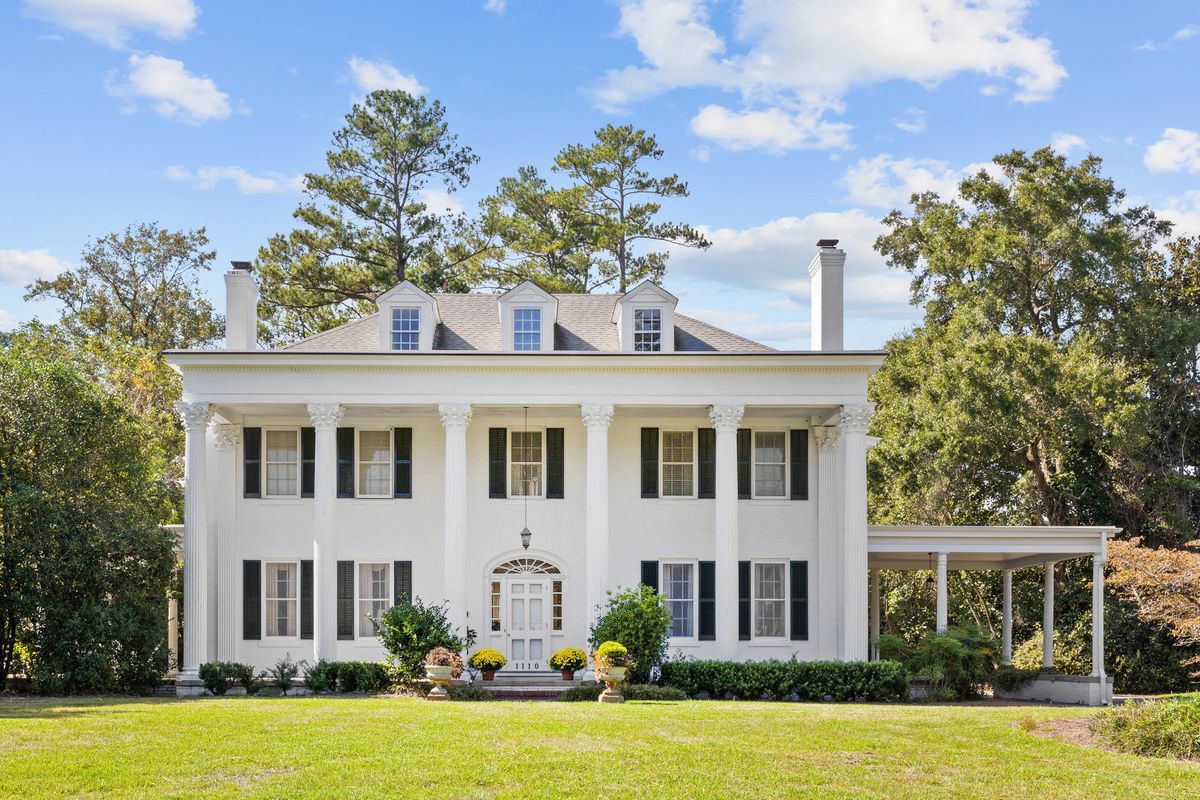Exploring Six Iconic Greek Revival Homes: A Journey Through History
The Greek Revival architectural style emerged in the United States during the early 19th century, reflecting a renewed interest in the ancient civilizations of Greece. This movement took root in a period characterized by a quest for identity and cultural roots following the American Revolution. Greek Revival homes, with their grand columns, symmetrical shapes, and intricate detailing, symbolize not only aesthetic elegance but also embody the ideals of democracy and civic virtue that resonated with the nation’s founding principles. In this article, we will delve into six notable examples of Greek Revival architecture, examining their historical significance and the narratives they encapsulate.
The Architectural Elegance of Greek Revival Homes
Greek Revival architecture is marked by several defining features that set it apart from other styles:
- Columns: Tall, stately columns resembling those of ancient Greek temples are a hallmark, often featuring Doric or Ionic orders.
- Symmetry: The design emphasizes balance and proportion, with façades that often mirror themselves.
- Pediments: Triangular gables that evoke classical temple architecture are a common element.
- Large Windows: Expansive windows are used to allow natural light, often adorned with decorative moldings.
- Porticos: Grand entrances are typically accentuated with covered porches, enhancing the inviting nature of the homes.
These features not only reflect aesthetic preferences but also serve as a reminder of the philosophical and political ideals that influenced the early American society.
Six Iconic Examples of Greek Revival Homes
1. The Parthenon in Nashville, Tennessee
While technically a replica of the ancient structure in Athens, the Parthenon in Nashville serves as a prime example of Greek Revival architecture and a cultural landmark. Built in 1897 for the Tennessee Centennial Exposition, this full-scale replica houses an art museum and a stunning statue of Athena. The Parthenon symbolizes both Greek heritage and American innovation, showcasing how classical architecture can be reinterpreted in a modern context.
2. The William H. Seward House in Auburn, New York
Constructed in 1816, the William H. Seward House is an exquisite representation of Greek Revival architecture. As the residence of Secretary of State William H. Seward, it played a significant role during pivotal moments in American history, including the abolition of slavery. The house features grand columns and a striking portico, making it a focal point of Auburn’s historic district.
3. The Greek Revival Mansion in New Bedford, Massachusetts
Located in the heart of New Bedford, this mansion exemplifies the wealth generated by the whaling industry in the 19th century. The home’s elaborate façade and interior rooms reflect the affluence of its original owners. This site also serves as a testament to the cultural exchanges that took place during the whaling era, with architectural influences drawn from both American and European styles.
4. The HABS House in Charleston, South Carolina
As part of the Historic American Buildings Survey (HABS), this house represents the enduring legacy of Greek Revival architecture in the South. With its towering columns and open-air porches, it mirrors the region’s climate and lifestyle while embracing the grandeur of classical design. Charleston’s commitment to preservation allows visitors to appreciate the historical significance of these structures.
5. The Van Cortlandt House in Bronx, New York
Dating back to the late 18th century but renovated in the Greek Revival style, the Van Cortlandt House is one of the oldest surviving buildings in The Bronx. It showcases the evolution of architectural styles over time, representing the seamless blend of colonial and Greek Revival elements. This house is essential for understanding the socio-political context of its time, including its ties to the American Revolution.
6. The Old Westbury Gardens in Long Island, New York
This estate, designed by the renowned architect George A. Crawley in the early 20th century, incorporates Greek Revival elements with a picturesque landscape. The gardens and architecture reflect the Gilded Age’s opulence and a nostalgic return to classical ideals. Today, it stands as a cultural site that offers insight into the lifestyle of America’s elite during that period.
Broader Implications of Greek Revival Architecture
The Greek Revival movement was not merely an architectural trend; it represented a broader cultural phenomenon. As the United States sought to establish itself as a nation with its own identity, the revival of classical architecture became a means of connecting to the ideals of democracy, philosophy, and civic duty that ancient Greece embodied.
In a time marked by rapid industrialization and urban growth, Greek Revival homes served as symbols of stability and continuity. They also provided a backdrop for social and political gatherings, reinforcing the notion that architecture can influence community and national identity. The enduring popularity of this style can be seen in its revival in various forms throughout subsequent architectural movements, including the Beaux-Arts and Neoclassical styles.
The Future of Greek Revival Architecture
As we move further into the 21st century, the preservation and appreciation of Greek Revival homes face challenges due to urban development and changing architectural tastes. However, there is a growing movement among preservationists and community advocates to safeguard these historical treasures. Initiatives aimed at restoring and maintaining Greek Revival structures are essential to keeping this architectural legacy alive.
Moreover, the modern interpretation of Greek Revival elements can be seen in contemporary architecture, suggesting that the style’s influence remains relevant. Architects are increasingly drawing upon the principles of symmetry, proportion, and classical detailing, merging them with modern functionality and sustainability practices.
Conclusion
Exploring Greek Revival homes offers a fascinating glimpse into the complex interplay between architecture, culture, and history. These iconic structures not only reflect the aesthetic values of their time but also serve as powerful symbols of American identity and democratic ideals. As we celebrate and preserve these architectural gems, we honor the stories they tell and the ideals they represent, ensuring that future generations can continue to appreciate their beauty and significance.
The legacy of Greek Revival architecture invites us to reflect on our own historical narratives and cultural expressions, reminding us that architecture is not just about buildings, but about the communities and values they embody.
See more BBC Travel World



